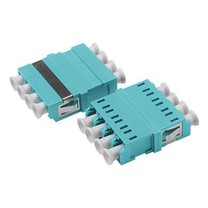
Fiber optics transmit data through the use of light signals that travel along thin strands of glass or plastic fibers. The basic principle behind fiber optic communication is called total internal reflection.
Here's a simplified explanation of how fiber optics transmit data:
Light Generation: The data transmission process begins with the generation of light signals. Typically, this is done using a laser diode or an LED (light-emitting diode).
Signal Encoding: The data to be transmitted is converted into a series of electrical pulses. These pulses are then used to modulate the intensity or frequency of the light signal. This modulation represents the data being transmitted, such as text, images, or video.
Transmitter: The modulated light signal is sent into the fiber optic cable through a device called a transmitter. The transmitter includes components that shape and amplify the light signal for efficient transmission.
Fiber Optic Cable: The fiber optic cable is made up of a core, which is the central part where the light travels, and a cladding that surrounds the core. The core is usually made of highly transparent glass or plastic material.
Total Internal Reflection: When the light signal enters the fiber optic cable, it undergoes a process called total internal reflection. This occurs because the light signal hits the boundary between the core and the cladding at a shallow angle and is reflected back into the core due to the difference in refractive indices between the core and cladding.
Propagation: The light signal continues to travel along the length of the fiber optic cable through multiple internal reflections. The cladding is designed to keep the light signal contained within the core, minimizing losses and maintaining the signal's integrity.
Reception: At the receiving end, the light signal reaches a device called a photodetector or receiver. The photodetector converts the light signal back into electrical pulses, which can be further processed to extract the original data transmitted.
Decoding: The electrical pulses are then decoded to reconstruct the original data. This process may involve error correction techniques to ensure accurate data transmission.






